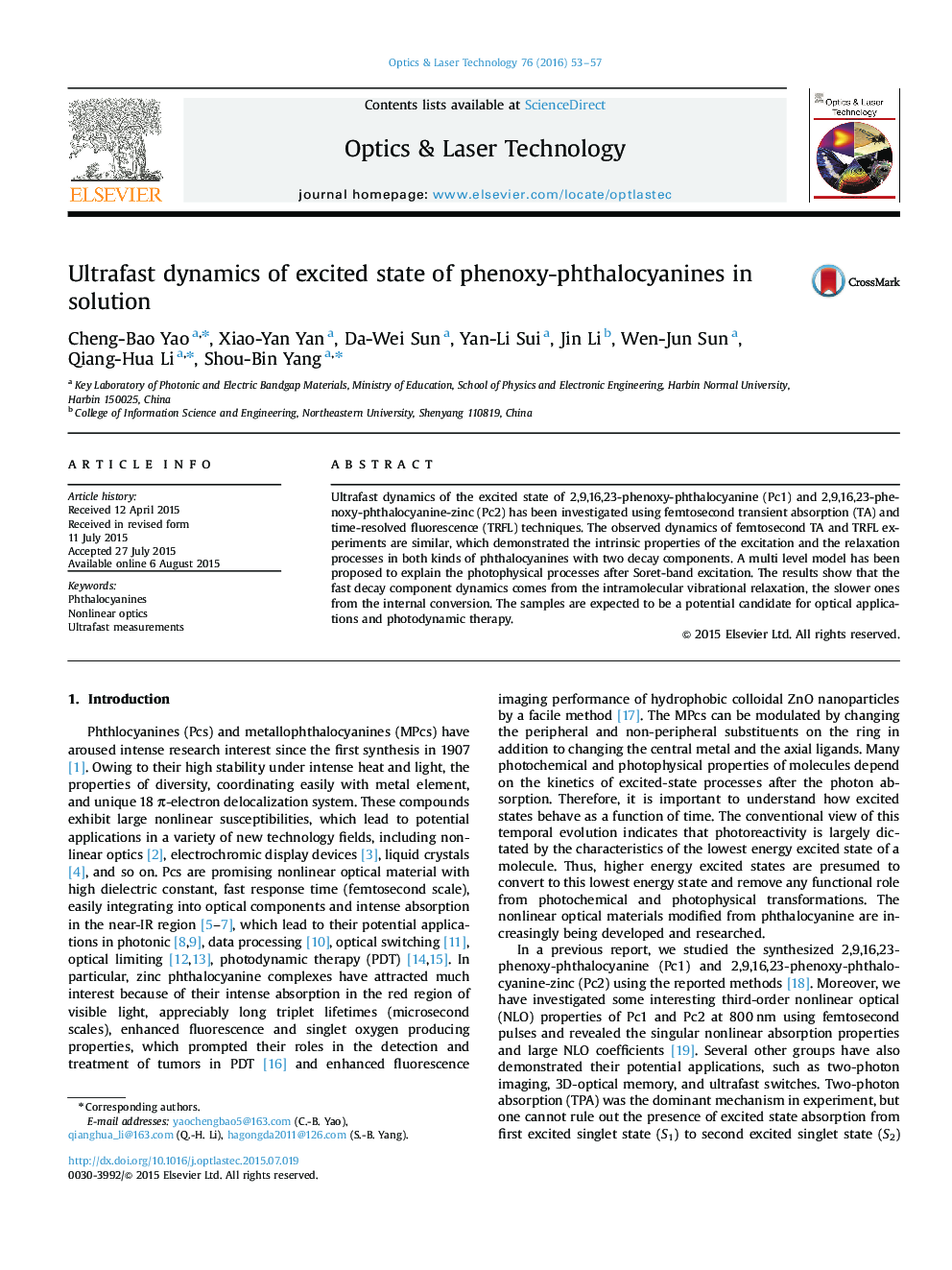| Article ID | Journal | Published Year | Pages | File Type |
|---|---|---|---|---|
| 738953 | Optics & Laser Technology | 2016 | 5 Pages |
•For Pc1 the short decay time is 17 ps and the long decay time is about 147 ps.•For Pc2 the short decay time is 8.6 ps and the long decay time is about 136.5 ps.•The results reveal that the fast decay component comes from the IVR.•The results reveal that the slower ones from the IC.
Ultrafast dynamics of the excited state of 2,9,16,23-phenoxy-phthalocyanine (Pc1) and 2,9,16,23-phenoxy-phthalocyanine-zinc (Pc2) has been investigated using femtosecond transient absorption (TA) and time-resolved fluorescence (TRFL) techniques. The observed dynamics of femtosecond TA and TRFL experiments are similar, which demonstrated the intrinsic properties of the excitation and the relaxation processes in both kinds of phthalocyanines with two decay components. A multi level model has been proposed to explain the photophysical processes after Soret-band excitation. The results show that the fast decay component dynamics comes from the intramolecular vibrational relaxation, the slower ones from the internal conversion. The samples are expected to be a potential candidate for optical applications and photodynamic therapy.
